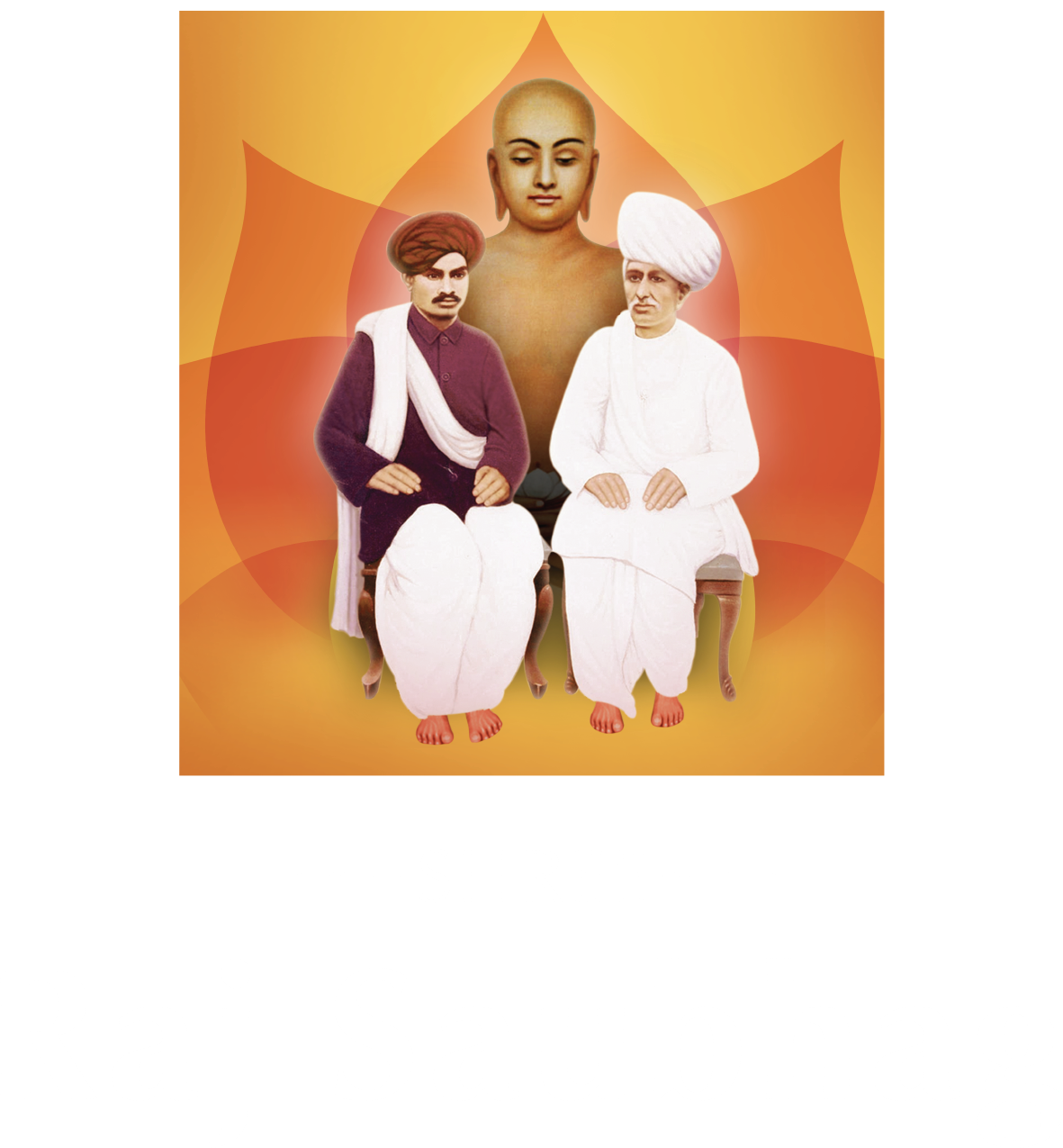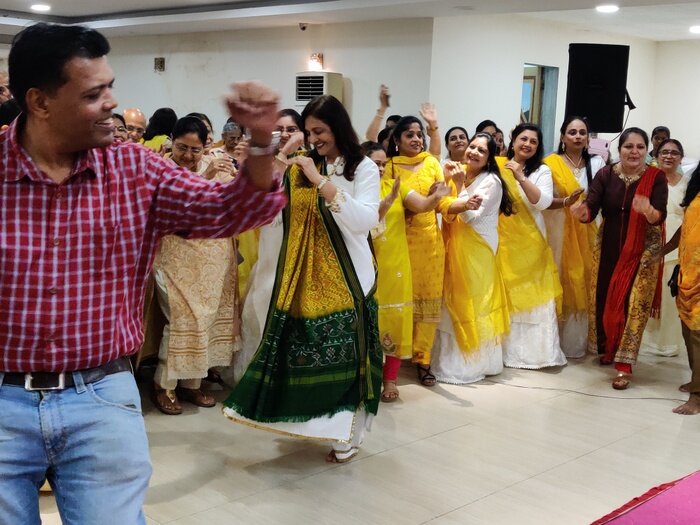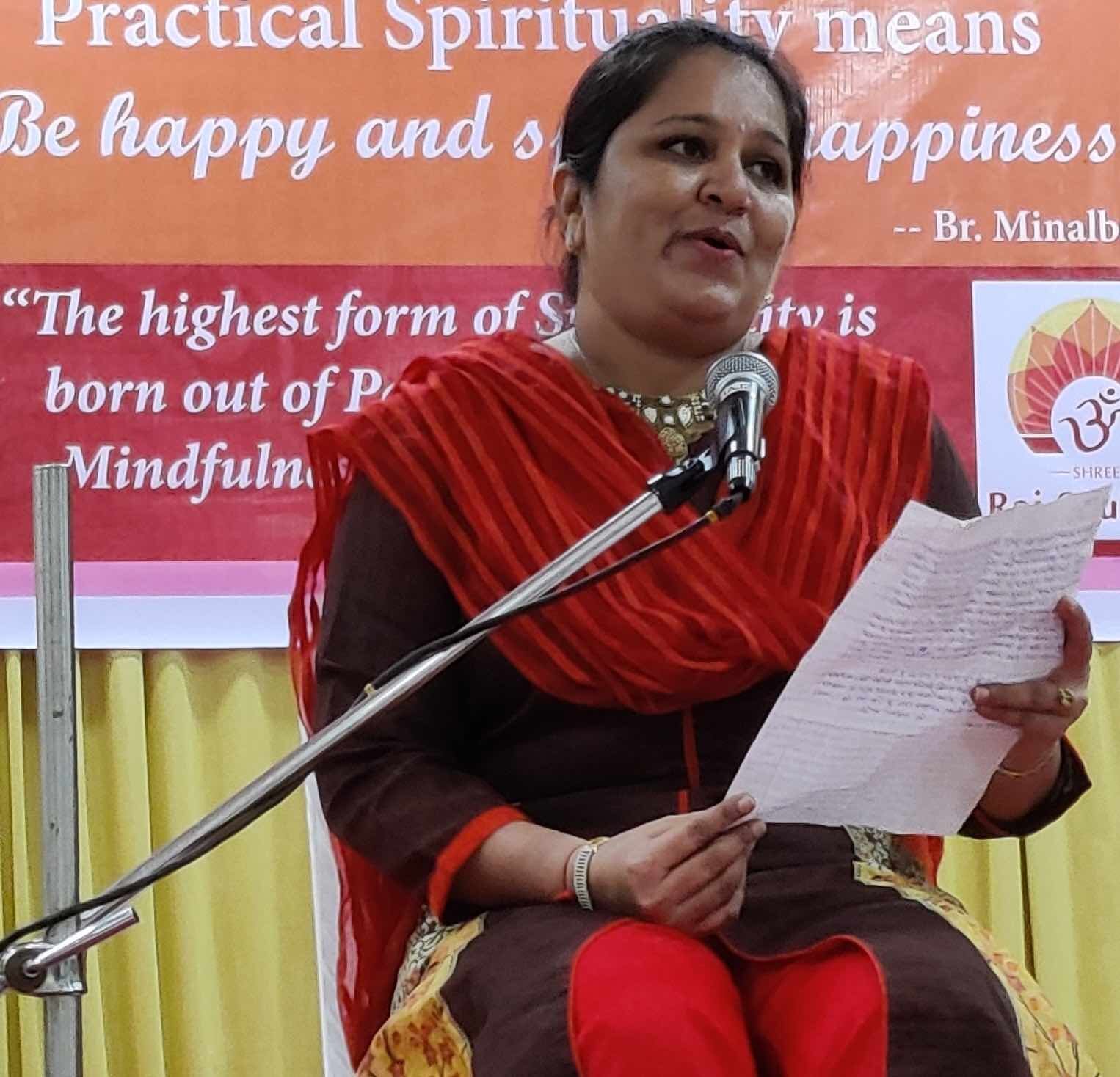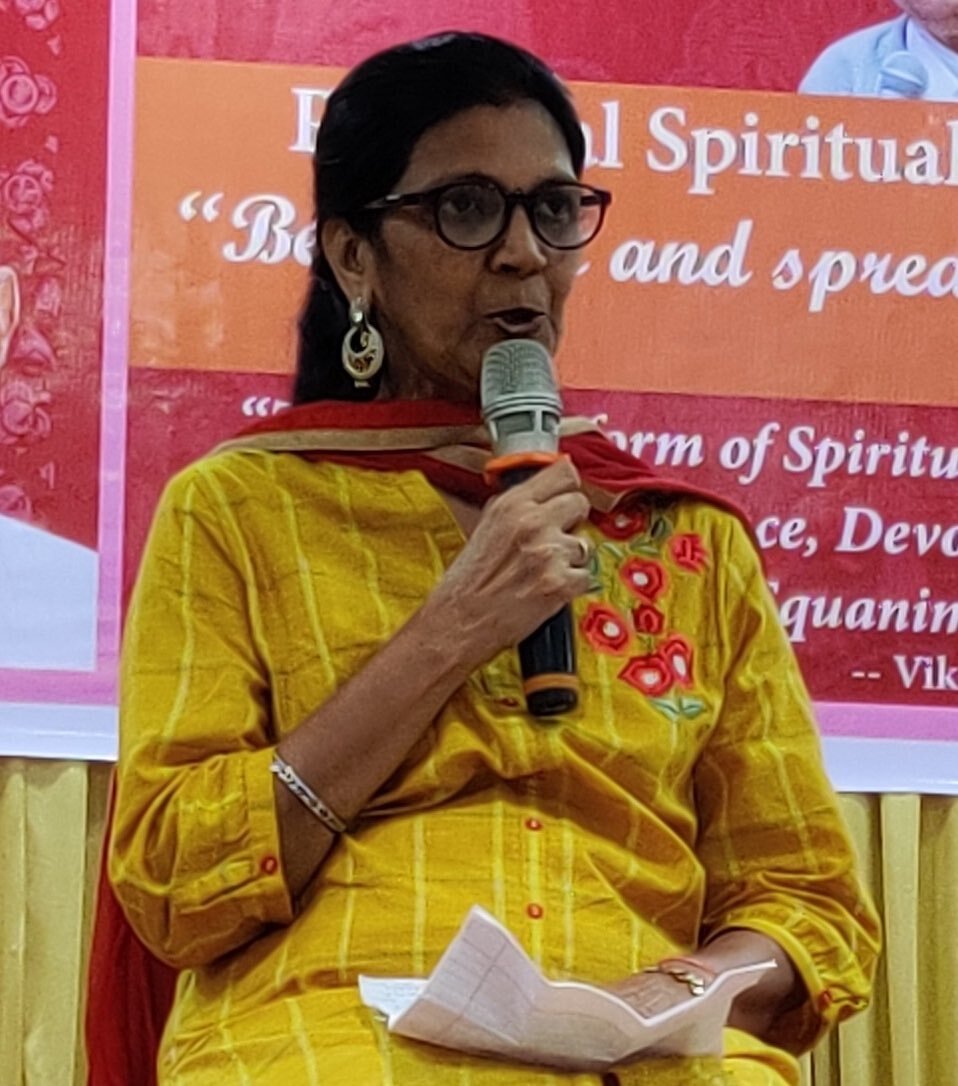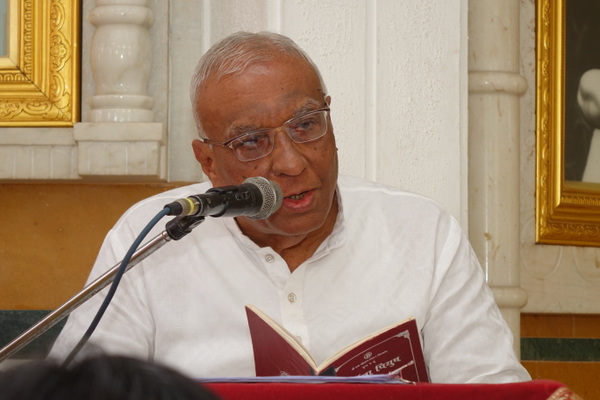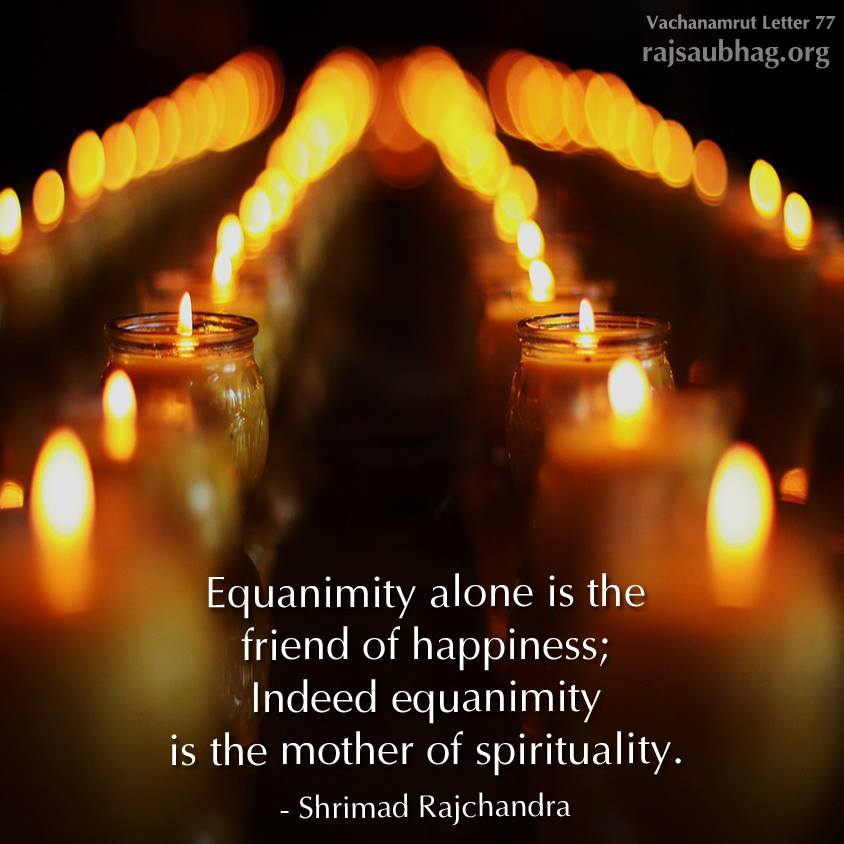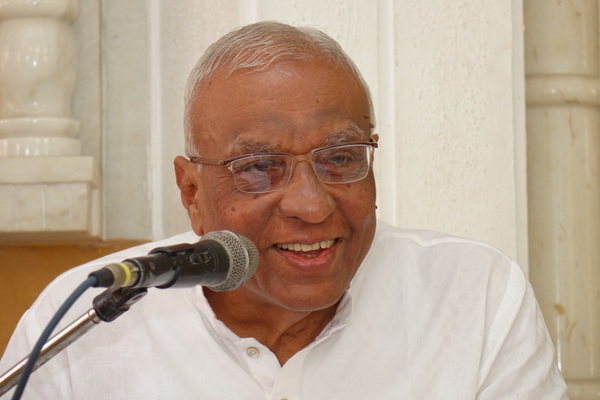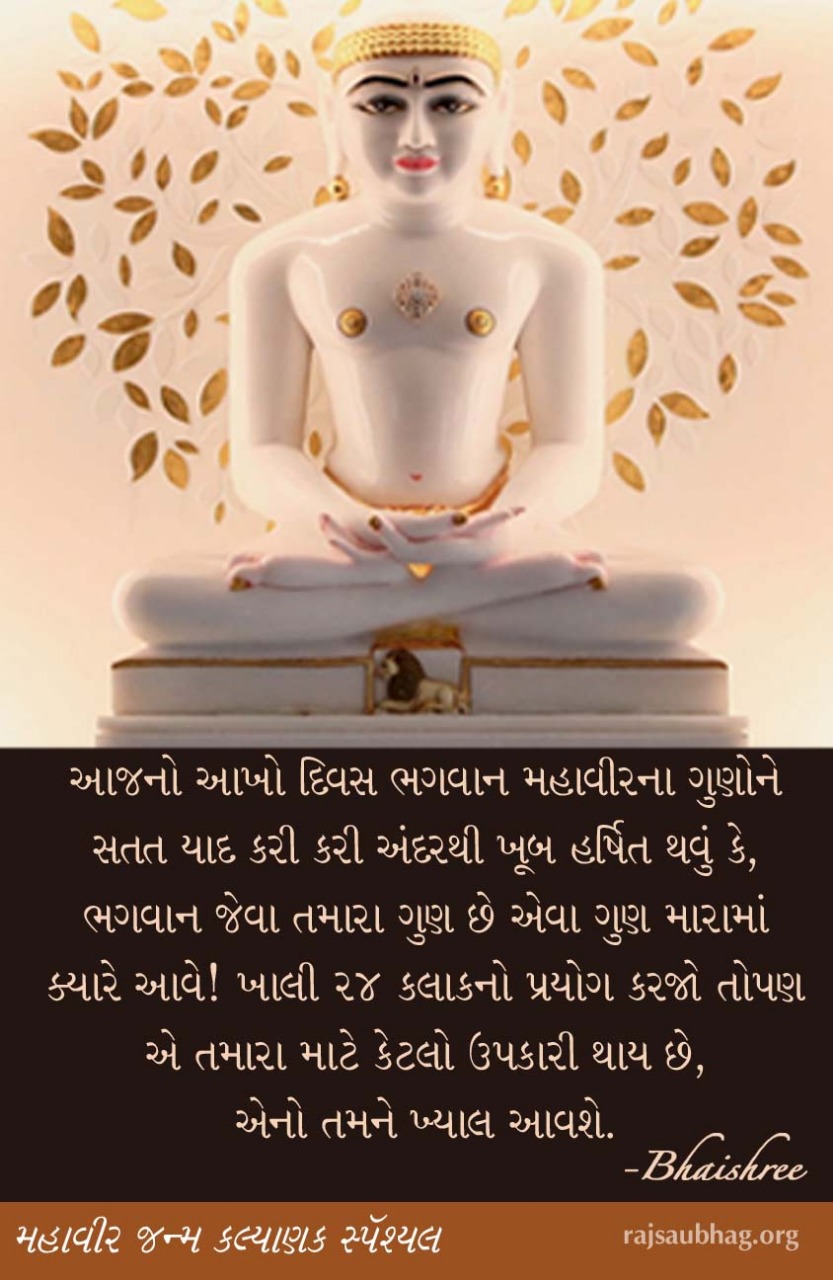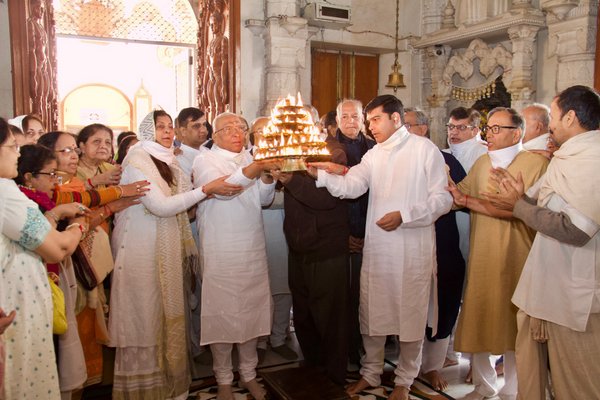“Ladies’ swadhyay gives us the opportunity to watch Minalben closely, almost as a friend. She lovingly explains complex spiritual concepts that stay in my mind, make me change my actions and thus, values start to build.”
On September 29, 2019 at Borivali’s Mega Party Hall, under Param Pujya Bhaishree’s tutelage and the presence of Pujya Brahmnishts, and a large audience of mumukshus, the 100th occasion of the Ladies Special Swadhyay was celebrated with great revelry. With diyas in their hands and divine song in the air, mumukshus welcomed Bhaishree with much warmth and joy. Two of our fellow mumukshus, Poornimaben and Chandrikaben, placed tilak on Bhaishree and venerated him with a garland. Ruchitaben and Zeel gave Bhaishree a heartfelt welcome through their graceful dance. Following on, Dulariben and Sheetal’s bhakti drenched one and all in bhaktibhaav.
“The unimaginable loss of losing my husband and father-in-law, all in a short span of time, emotionally weighed me down. My guru gave me the strength and will to hold on during these testing times. The contribution of the ladies’ swadhyay in my life is immense. It gave me hope and courage. Minalben helped me set a routine in life that enabled me to concentrate on other things. All the time I spent around my husband’s routine was productively shifted to completing daily agnas.”
After that, Bhaishree’s swadhyay began on the topic of 'Willpower', in which Bhaishree said, “willpower is a powerful force and a solution to completely transform one’s life.” An unwavering faith in the Soul helps one build willpower. One should internalise the phrase “I am a pure and eternal soul”, and one will receive the benefits of willpower. We are the key to our own salvation and liberation, however we can’t achieve this without strong willpower and regular purusharth. When our body becomes weak, we must not believe we are weak, because true strength lies in the mind and in our willpower. It is only by holding your inner willpower, will faith in the Aatma strengthen.
“These swadhyays are slowly making me eligible and suitable for my ultimate goal and breaking my attachment to this body.”
Bhaishree appreciated Brahmnisht Minalben’s and Brahmnisht Lalitaben’s commitment to having regular monthly swadhyays for almost seven years. Despite having an extremely busy schedule and handling numerous responsibilities in various roles, Brahmnisht Minalben’s effortless happiness and simplicity inspires every mumukshu of the ladies’ swadhyay.
“Through the ladies’ special swadhyay I have been able to know more, understand more and learn more, not only spiritually but also my worldly life. It is like a divine light, an incessant shower of love. I have learnt how to practically apply all our teachings in our daily lives as women.”
A group of women from Borivali put together a graceful and thoughtful dance depicting Mira’s devotion to the song “Mira tere namni divani ho gayi”. This was followed by Aishwarya’s wonderful dance performance and then, the spiritual play, “Jagruti ni Jyot”. Every actor did justice to their character, with effective dialogues and relatable situations, this play definitely touched everyone's hearts. The event ended with Dulariben, Mamtaben and Hansaben showcasing the importance of girl power with examples from swadhyays.
The event was compered by Rupaben and Nikitaben. As a vote of thanks Rupaben, Nikitaben, Suhaben and Kavitaben presented Bhaishree with a shawl while Hansaben, Ritaben, Mamtaben and Bhavnaben and Kokilaben presented shawls to Brahmnisht Minalben and Brahmnisht Vikrambhai respectively.
“Bhaishree gave agna to Minalben to come to our house once a month to give swadhyay since my mother-in-law suffers from paralysis. After ten years, as a result, she has become stronger, more accepting and peaceful.”
“Nari tu Narayani”
